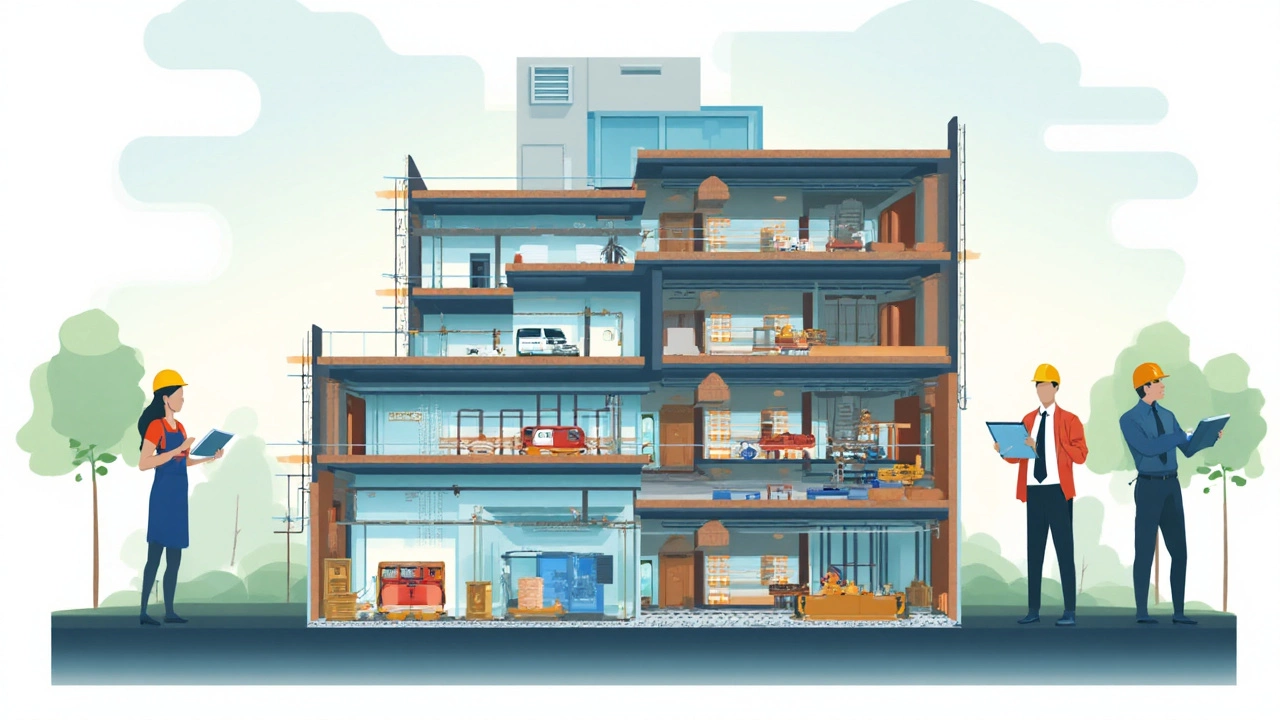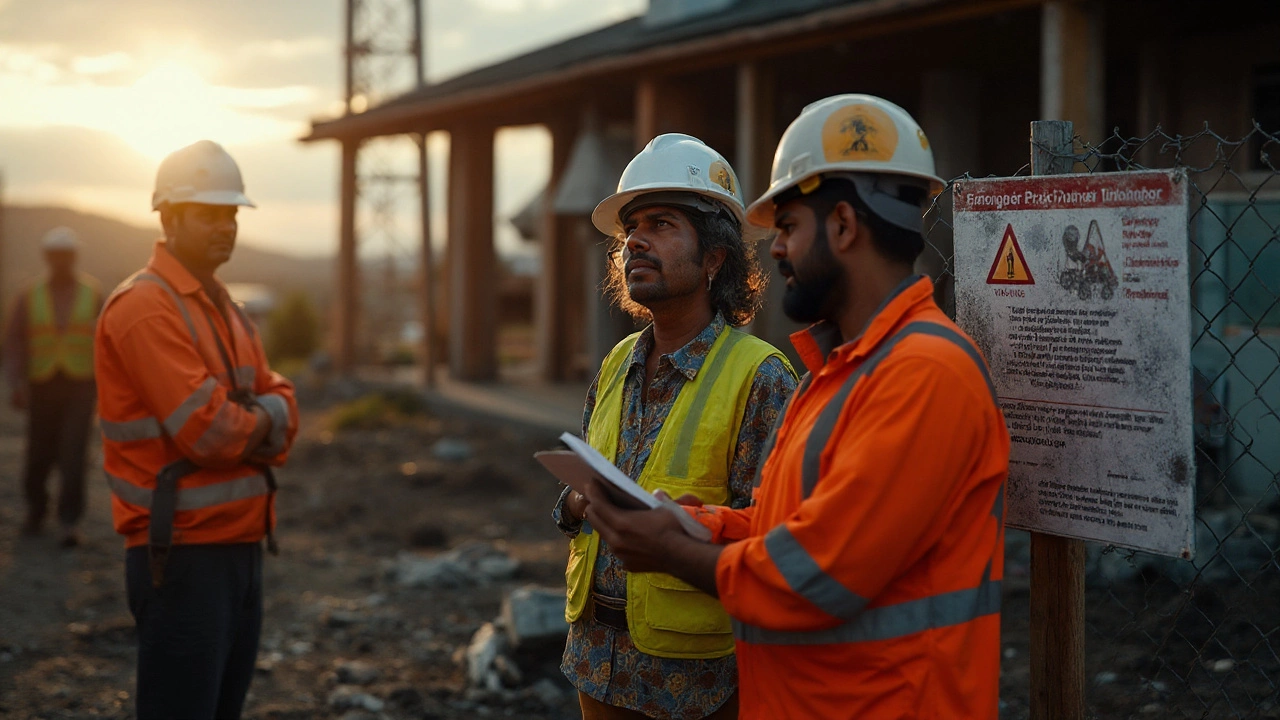If you’ve ever walked past a construction site and wondered how those buildings come together—and why they’re allowed to be built on certain sites or heights—there’s a good chance you’ve brushed up against the idea of “type C construction.” Sounds a bit mysterious, doesn’t it? You know a type A or type B always sounds more ‘premium,’ but what’s with C? Is it just the third-best or is there a method to the madness? The reality is, understanding what type C construction means can save heaps of confusion (and sometimes, money), especially if you’re planning to build or renovate in Auckland or across New Zealand.
What Actually is Type C Construction?
Let’s get right into it. In New Zealand—and honestly, in Australia and several other places—the building code sorts structures into three main classes based on their ability to handle fire, among other risks. Type C construction is, bluntly, the lightest and least fire-resistant of the lot. Think of it as the basic model in the showroom, but don’t let ‘basic’ fool you—it’s there for a reason.
The term comes from the Building Code of Australia, which New Zealand’s building rules borrow from quite a bit. In the official code, construction is grouped as Type A (most stringent), Type B (moderate), and Type C (least restrictive). Here’s the deal: type C construction is typically for low-rise buildings that won’t cause massive catastrophes if a fire broke out. We’re talking single-storey homes, small offices, and light commercial blocks—basically, anything that doesn’t pull in massive foot traffic or rise several floors above ground.
The rules get detailed, but the heart of it is this: type C construction relaxes the requirements for fire resistance on structural elements like load-bearing walls, beams, columns, floors, and ceilings. While Type A structures often require hefty, sometimes concrete-based builds, type C gives you the flexibility to use timber framing, lightweight steel, and less complex claddings.
Is there a catch? Sure. Buildings that follow type C rules have strict limits on their size and the number of people inside. For example, you can’t build a high-rise apartment and expect to get away with type C. There are also sharp eyes in council consent offices looking out for non-compliance, and the penalties in Auckland can get brutal. I still remember a mate in Manukau whose development stalled for six months when he tried to push type C features into a mid-rise block—it’s not worth winging it.
One important detail: type C construction doesn’t mean zero fire safety. There are still detailed, non-negotiable expectations around escape paths, smoke alarms, and even passive fire protection for certain elements. These lighter rules are matched to the lower risks associated with smaller and less complex buildings.
Thinking about a new build or a granny flat in your backyard? Type C can often save you time, money, and endless paperwork, if your design fits the height, area, and use rules. Always check with the local council. Trust me, no one wants an unexpected compliance notice halfway through construction.
For a bit more concrete (pun intended) context, here’s a quick table showing the fire resistance standards for each construction type:
| Construction Type | Max Height | Fire Resistance Level (FRL) | Common Uses |
|---|---|---|---|
| Type A | Up to 25m | High (often 120/120/120 mins) | Multi-storey apartments, malls |
| Type B | Up to 13m | Medium (60/60/60 mins) | Low- to mid-rise commercial and offices |
| Type C | Up to 8.5m | Low (often 30/30/30 mins or nil) | Houses, duplexes, small offices |
Notice how Type C sits at the bottom for fire resistance? That’s why councils keep a watchful eye on where it’s used. If you’re going for speed and cost savings, just be honest about your building’s risk profile and talk to the right people early. Lydia and I nearly walked into a permissions minefield when we were speccing out a garden studio in West Auckland. Her spreadsheets saved us, as usual!

Why Type C is Popular: Pros, Pitfalls, and Practical Examples
It’s not just the price tag—though that does lure plenty of people. Type C construction is popular because it matches the actual risk of smaller buildings. Why layer on mountains of concrete or fireproof steel if your home isn’t going above two levels and there’s a speedy exit out the front door?
Take Auckland’s push for infill housing. The housing crunch here means people are looking to put extra dwellings on their property, often as granny flats or minor units out back. Using type C construction lets these projects happen quickly, with lower compliance costs and simpler building material requirements.
Another practical win comes with renovations. If you’re not adding floors or making a home much bigger, you often don’t have to meet the tough standards of Type A or Type B. Timber framing, simpler acoustic design, and less-invasive work make for faster project timelines. That means your place isn’t a mess for long, which keeps the peace at home—trust me, I’ve earned more than a few brownie points from Lydia by keeping renovations snappy.
But there are watch-outs. Let’s talk wind: Auckland’s weather throws up a fair bit, and lighter structures can cop a beating. So, while type C gives you design freedom, you can’t skip a decent structural engineer. The code covers fire but expects you to address the other risks too. Also, some lenders and insurance companies will ask more questions about your “build type” if you opt for lighter construction. They want to know you’ve got proper documentation and aren’t about to fudge compliance.
Fire protection is another watchpoint—just because the code says you don’t need a 2-hour fire-rated wall doesn’t mean you should ignore all fire safety. Make sure you’re still sorted for smoke alarms, escape plans, and sensible materials (nobody wants flammable linings in the kitchen). Don’t get tricked into thinking ‘type C’ means you can slap anything together and hope for the best.
Here’s where it gets interesting. Recent stats from the Building Performance authority show that, in 2024, about 59% of new standalone homes in Auckland were built using type C construction systems. That’s not just because of cost—builders have gotten creative with new products, like engineered timber that performs way better than old-school pine or particleboard. Some modern pre-fab homes are type C, but still strong and good-looking, which blows away that old “cheap and nasty” stereotype.
Want some real tips if you’re planning a type C project?
- Double-check your building’s intended use and max occupancy—whatever saves you a dollar now can cost big if you stretch the rules and have to redo work later.
- Get friendly with your local consent officer before paying any deposit to a builder—having an early ‘go/no go’ saves endless arguments down the line.
- Look into fire alarms and passive protection, even if not strictly required. Sprinklers are rare in homes, but smoke detection is cheap and life-saving.
- Choose your builder wisely—a good one knows the shortcuts that don’t break the law but still keep you safe and compliant.
- If your property has tricky slopes or is near a bush zone, talk to an expert about weather and fire risks—not all type C projects are equal when it comes to wild Auckland weather.
I’ve seen some wild things—like a family on the North Shore pushing for a super-cheap extension, ignoring local rules, only for the project to stall in court over compliance. No one wants that drama, especially when most headaches can be dodged with clear paperwork and honest design plans.
For those in the commercial game: many small offices and shops sneak in under type C in the suburbs, where traffic is low and risks are manageable. The design options get broader and costs stay controlled, perfect for new cafes or shared spaces. But go bigger—or start stacking floors or rooms—and you move into B or A territory, where the rules tighten hard. It pays to keep a close eye on those thresholds.
One note: in multi-unit developments, just because each townhouse looks the same doesn’t mean they can all use type C. If you join dwellings, increase area, or fiddle with layouts, you could trigger a total code shift. Developers know this rule by heart (or learn it the hard way—some expensive lessons have come out of South Auckland and West Harbour in the last year or two).

The Future of Type C Construction and Final Tips
The building code keeps shifting—regulations evolve to match modern risks and new building materials. Type C rules aren’t set in stone, and what’s accepted today might get a touch stricter as new technologies and fire data roll in. Keep an eye on changes; if you’re starting a build in mid-2025, for example, check the Building Performance website or have a chat with a registered designer for the latest updates.
Auckland’s love affair with compact builds and backyard cabins isn’t going away. If you’re keen to maximize your section and keep it legal, type C is often your ticket—just pair it with some common sense. Don’t cheap out on builder selection, and don’t ignore site-specific features like wind, slope, and bushfire zones. It doesn’t matter if the code relaxes, insurance and resale will still hinge on the quality of the build.
One cool emerging trend: modular and panelised build systems. Lots of these new homes are type C by definition but perform better than stick-built options from a decade ago. Think insulated panels, seriously clever joinery, and smart ventilation—they save on energy bills and often pass council checks with fewer hiccups. More architects are playing with these ideas, and some insurance companies are starting to favor homes built this way because the risks are accurately documented and easier to price.
If you’re worried about future resale, don’t be. Well-documented, code-compliant homes—no matter the construction type—still sell quickly in Auckland and most of New Zealand. Agents will flag poorly finished work or lack of permits way before ‘type C’ ever becomes an issue. My advice: upfront honesty always wins. Take the time to understand your design, get proper sign-off, and keep all your consent and as-built drawings filed. When Lydia and I sold our old Titirangi place, the paperwork made settlement a breeze, and buyers actually appreciated knowing exactly how and why our house was built the way it was.
For people just learning about type C construction: It isn’t some cheap, risky loophole, but a smart way of building that matches risk to reality while saving money and speeding up the process. As long as you play by the rules, talk openly with your building pros, and keep a weather eye on local code changes, it can be the best solution out there for modern homes and businesses.

Written by Fletcher Abernathy
View all posts by: Fletcher Abernathy